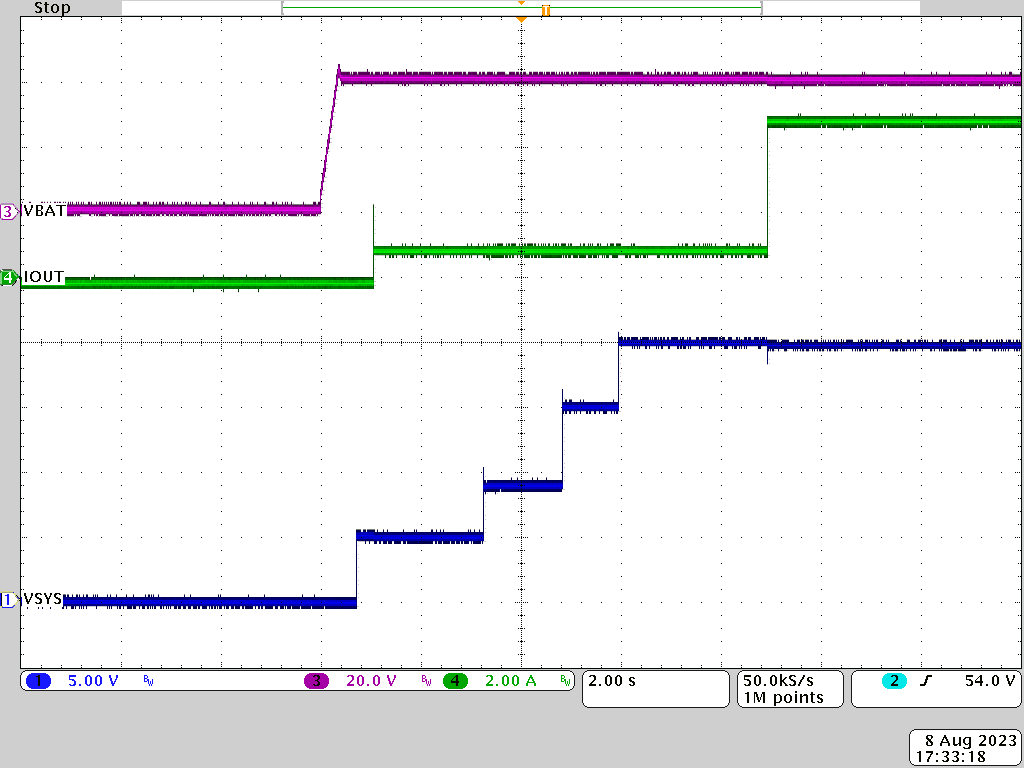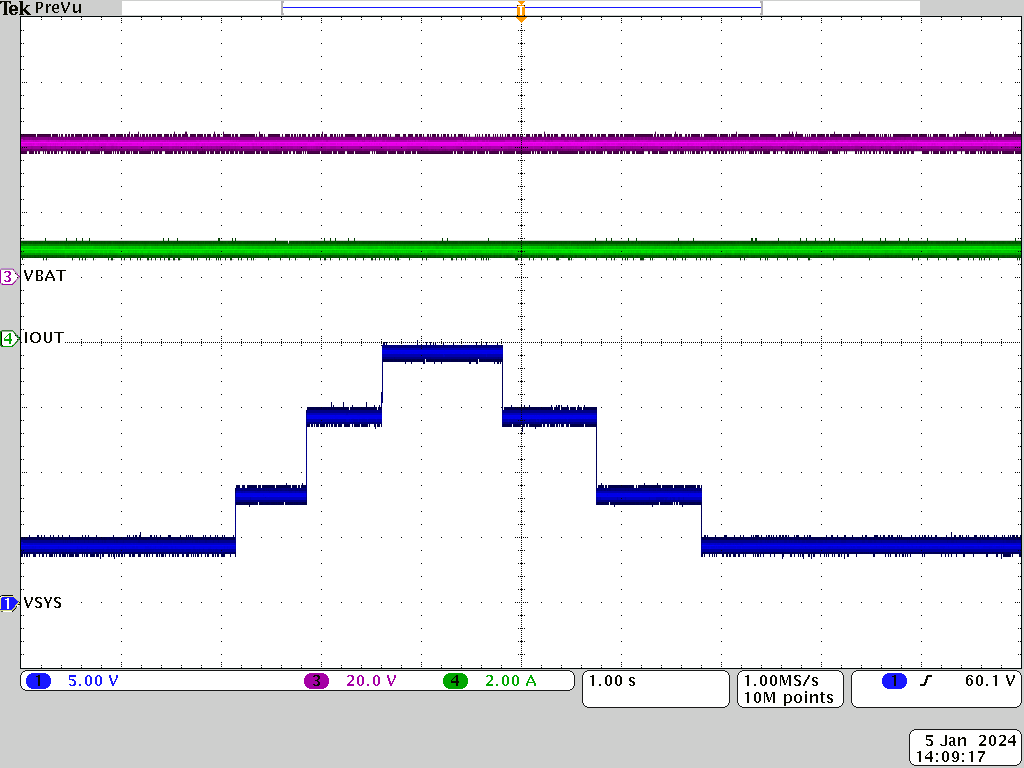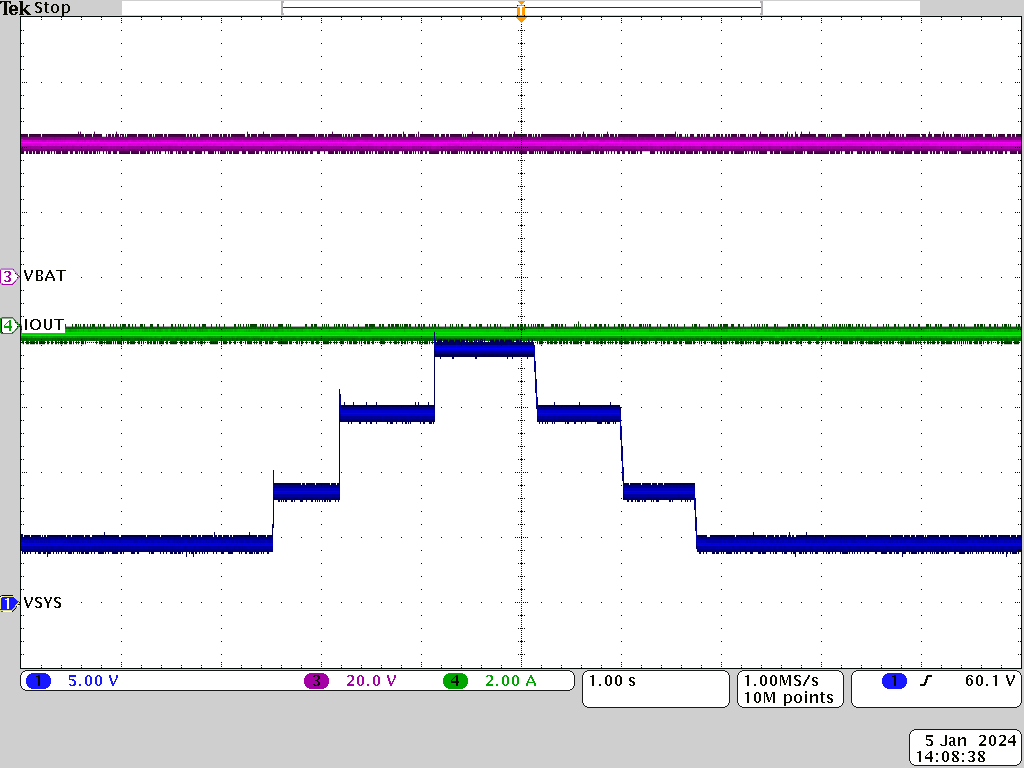TIDT349 January 2024
- 1
- Description
- Features
- Applications
- 1Test Prerequisites
- 2Testing and Results
-
3Waveforms
- 3.1 Charge Mode Start-Up Waveform
- 3.2 OTG Mode Start-Up Waveform
- 3.3 Voltage Transition at OTG Mode
- 3.4 Ripple and Noise at OTG Mode
- 3.5 Load Transients at OTG Mode
- 3.6 Switching Waveform
- 3.7 Overcurrent Protection at OTG Mode
- 3.8 Short-Circuit Protection at OTG Mode
- 3.9 Short-Circuit Protection at Charge Mode
3.3 Voltage Transition at OTG Mode
Figure 3-32 through Figure 3-11 show a voltage transition from 5V to 20V at OTG mode, and then back to 5V.
 Figure 3-9 OTG, 40Vbat, 5V to 20V Voltage Transition
Figure 3-9 OTG, 40Vbat, 5V to 20V Voltage Transition Figure 3-11 OTG, 40Vbat, 5V to 20V Full Cycle Transition
at 3A Load
Figure 3-11 OTG, 40Vbat, 5V to 20V Full Cycle Transition
at 3A Load Figure 3-10 OTG, 40Vbat, 5V to 20V Full Cycle Transition
at Open Load
Figure 3-10 OTG, 40Vbat, 5V to 20V Full Cycle Transition
at Open Load